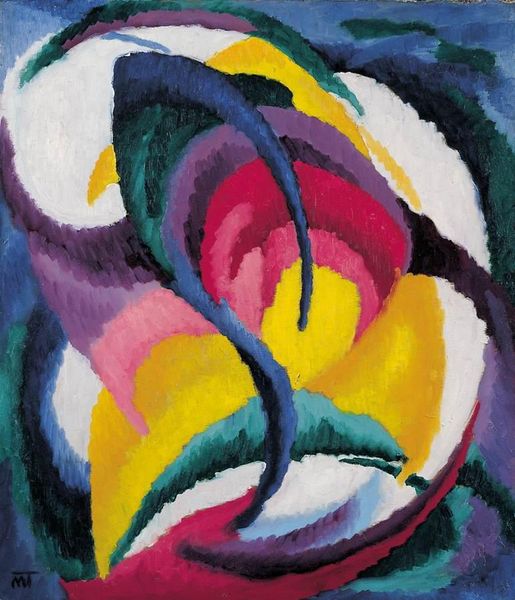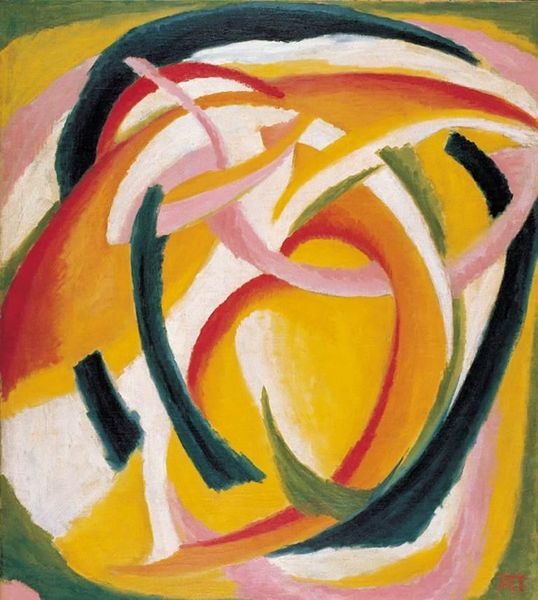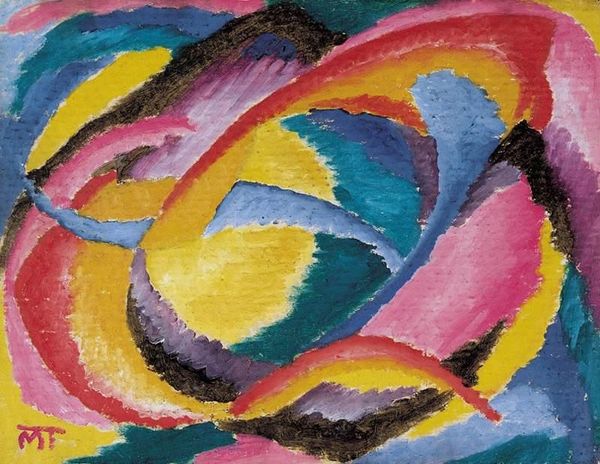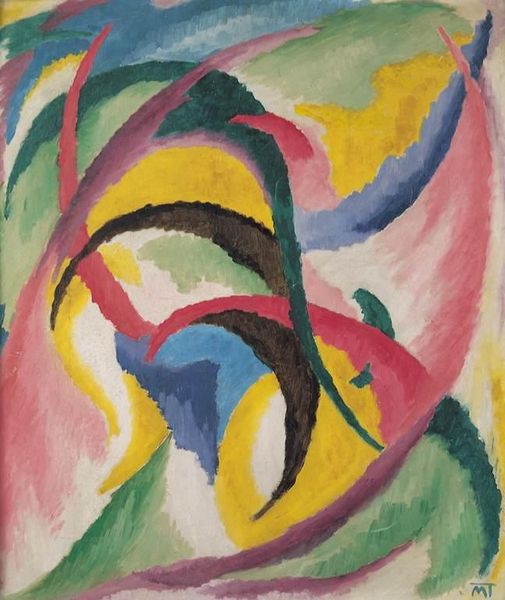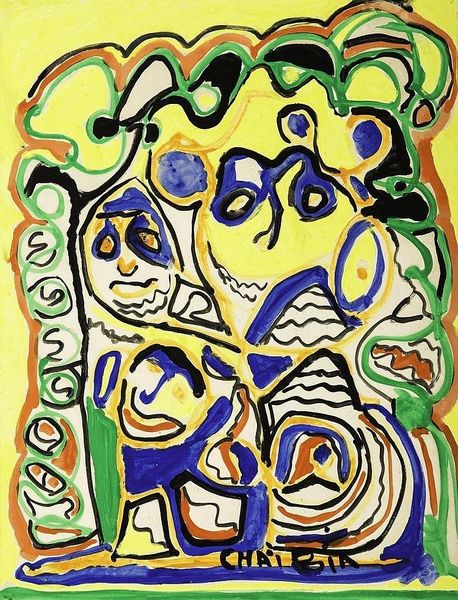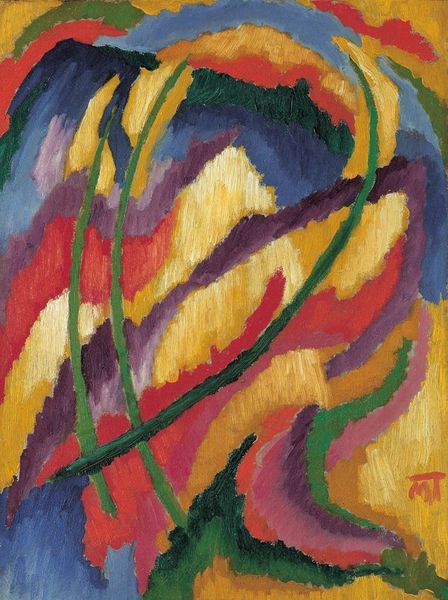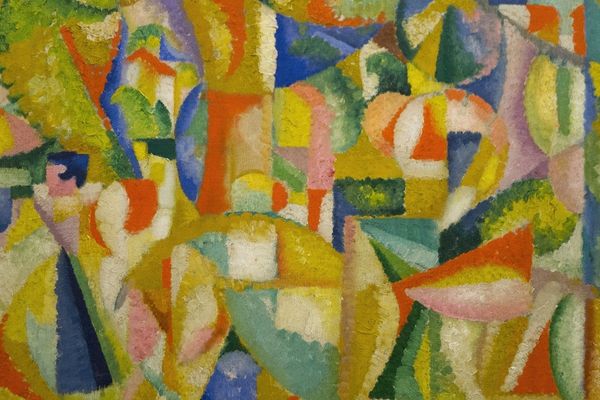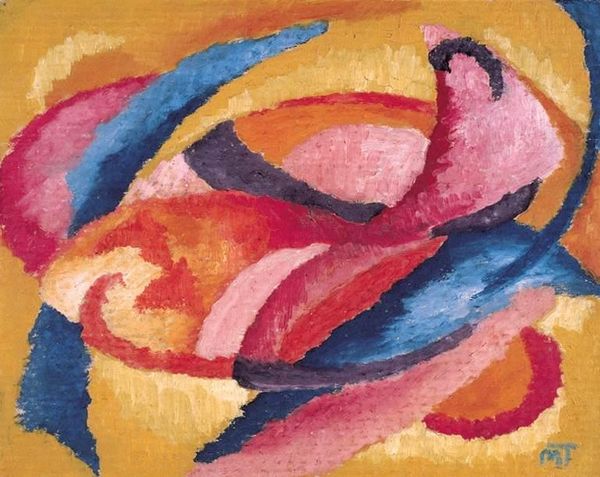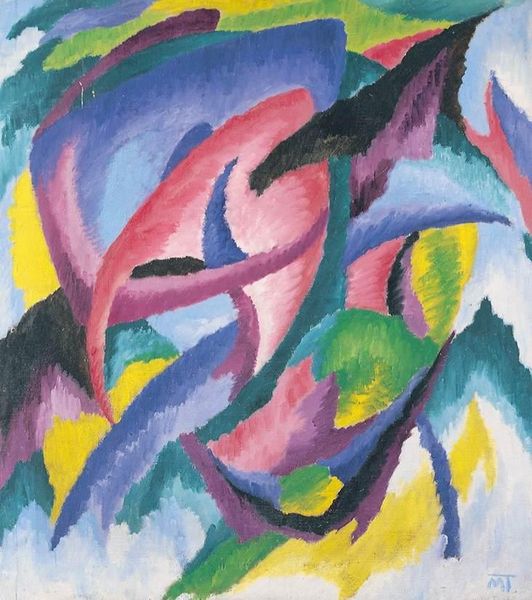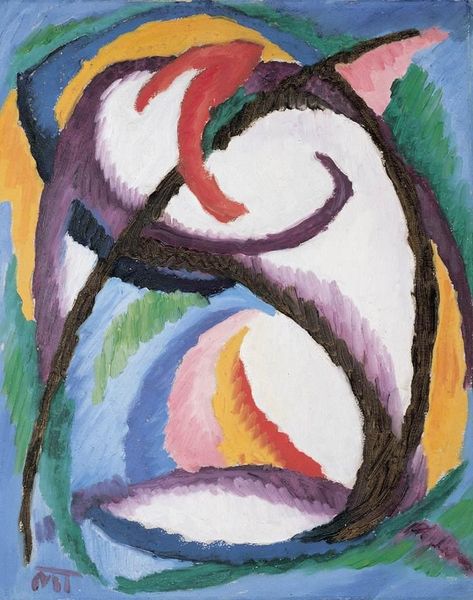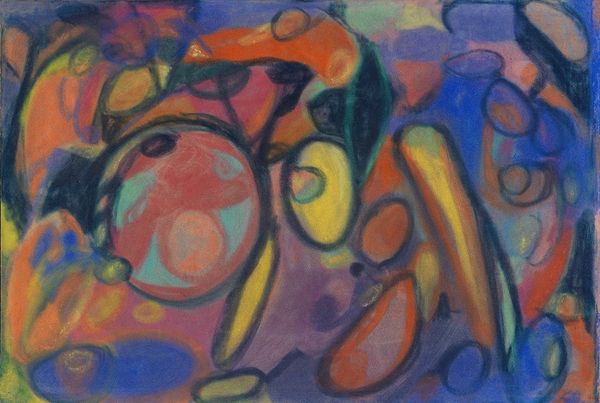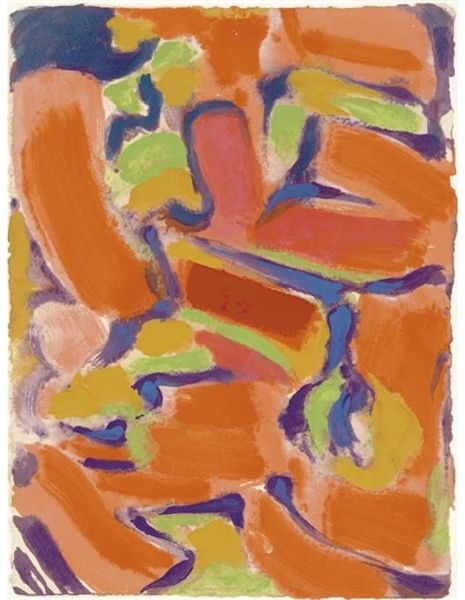
painting, acrylic-paint
#
organic
#
painting
#
acrylic-paint
#
abstract
#
geometric pattern
#
organic pattern
#
geometric
#
expressionism
Copyright: Janos Mattis-Teutsch,Fair Use
Curator: We’re looking at “Composition,” a painting by Janos Mattis-Teutsch. Editor: My immediate response is chaotic yet strangely balanced. It’s an explosion of color—yellow, green, purple, blue— swirling in what appears to be acrylic. The strokes themselves possess an organic quality. Curator: Precisely! It’s this very interplay between chromatic exuberance and structured dynamism that holds my interest. Notice how Mattis-Teutsch orchestrates these colors, achieving an almost lyrical harmony despite the seemingly erratic application. We must consider here the push-and-pull between expressionism and geometric order. Editor: But isn’t it reductive to divorce such abstract forms from their social context? Mattis-Teutsch, living through intense periods of political and social upheaval, must have channeled that unrest. It strikes me that such paintings can offer visual analogues to the destabilizing forces reshaping lived experience. Could this chaotic balance not be viewed as the attempt to maintain some form of order during existential turbulence? Curator: While historical context certainly matters, it’s crucial to appreciate the formal innovations within the piece. The gestural quality of the application generates an energetic surface. Editor: I can’t help but see the swirling patterns as a representation of both psychic and external unrest. The colours themselves carry complex emotional registers: greens suggesting a connection to nature but here tinged with unrest, purples implying power countered by its dissipation amidst chaos. It may be tempting to consider pure visual pleasure divorced from political thought, but isn’t that a historically blind exercise in artistic appraisal? Curator: And I think there’s a productive middle ground. Certainly, socio-historical elements provide insights, but the pure act of visual appreciation, looking at composition and intention, isn’t anathema to informed analysis. The artist here employs forms for feeling, forms speaking to forms. Editor: I’m beginning to wonder how it speaks to us. Mattis-Teutsch presents us not merely with an artistic artifact but rather with a form that embodies political unrest. That alone feels invaluable. Curator: A valuable encapsulation that begins with the canvas itself, as material form. Editor: Agreed; the key lies, of course, in understanding each art piece on its own merits within a larger intersectional story, I feel.
Comments
No comments
Be the first to comment and join the conversation on the ultimate creative platform.
